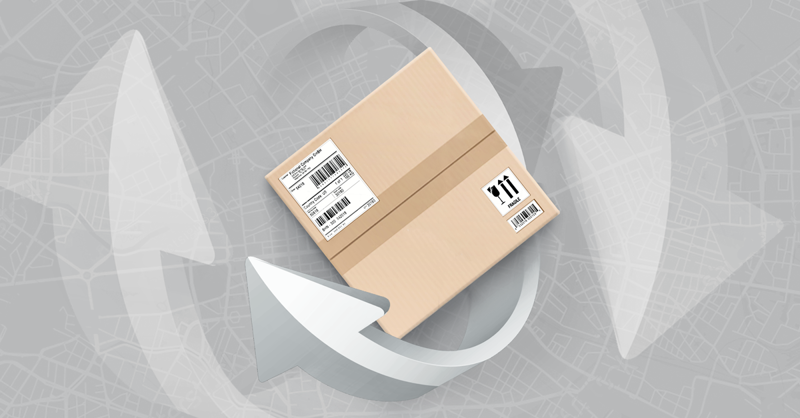There was one thing guaranteed after a robust holiday shopping season. Retailers and ecommerce companies were bound to have a busy returns season. And, so far, they have not been let down.
According to Adobe, The 2021 holiday season reached $205 billion in the US, a new holiday season high. In addition, overall online sales for the year clocked in at roughly 23% of the $4.58 trillion of total US retail sales, according to the National Retail Federations (NRF).
Holiday returns grow along with shippers’ costs
But now, those holiday shoppers are sending back unwanted, unused, and unloved holiday presents, and it is creating quite a logjam for already taxed final-mile carriers.
A quarter of Americans anticipate returning at least one holiday gift, according to a report by UPS. That comes to at least 60 million packages during the returns season for one carrier alone—a 10% increase over 2020 holiday returns.
And all of those returns add up for retailers regardless of the carrier.
Up to $114 billion in purchases are expected to be returned during the post-holiday returns period. That’s up from $100 billion last year, according to a report in ModernRetail.
Holiday returns are just an extension of the returns surge seen for the entire year.
Ecommerce retail returns surge in 2021
On average, retailers expect to get back about 16.6% of the total merchandise that customers purchased in 2021, according to survey results released by the NRF and Appriss Retail. That’s a bump from 10.6% in 2020.
What’s more, it adds up to over $761 billion of merchandise, according to the survey based on responses from 57 retailers between mid-October and mid-November 2021.
While returns are inevitable as retailers offer more flexible return policies, including free and low-cost returns, companies must control costs to maintain their profit margins.
A report from companies in the returns industry estimated that it cost $33 for retailers to process a $50 return item in 2021, a 59% increase over the previous year.
Here are five ways to run your returns so customers are happy and costs are contained:
Set a Clear Returns Policy: Your online returns policy should be clear, detailed, and easy to find. Whatever your return policy may be, it should be prominent on your ecommerce site. Ensure shoppers know the deadlines, costs [free?], procedures, and any other information early in the process, so there is no confusion before, during, and after checkout.
Encourage Alternatives: While there will be costs for reverse logistics, there are ways to help keep expenses to a minimum. For example, offer free return shipping only for purchases over a certain amount, as many do with initial free shipping price points. Another way to keep customers who want a liberal and cost-effective returns policy happy while keeping costs in line is to provide free return shipping only for exchanges or store credit while charging for shipping on refund requests. This not only helps to reduce losses but also keeps customers coming to your store and perhaps adding to their original purchase.
Protect Profits with Efficient Packing: From bracketing-- buying multiple items or variations looking for one that meets expectations—to ordering on a whim or in error, customers have plenty of reasons to return items purchased online. Retailers and ecommerce companies sure don’t need to give them yet another. While damage may always happen, the right multi-carrier management solution can help retailers pack shipments efficiently. Proper packing not only reduces costs on shipping from surcharges and dimensional weight (DIM) fees, it also helps cut down on damage and reduces waste at the same time.
Make Returns Easy: People want it easy from one-click purchasing and “buy now” options. And so do retailers. Automating ecommerce returns, such as with the Transtream Returns Widget, can save time and effort. From notification about the placed return request to printing the label to allow customers to track the returned item, automation will speed the process and reduce costs on your side and customer frustrations.
Turn Returns into Sales: When shoppers make a return, they are back on your website to process it. At this point, you can offer credits or special items or purchases for them that encourage additional purchases. Not only recouping potential lost revenue but maybe increasing your revenues. Even if they don’t buy at that point, a smooth returns experience can turn a negative into a positive – and repeat business.
Returns will always be part of the retail sales cycle. However, retailers can keep their customers happy and cut their costs by controlling the process to limit the expense of reverse shipping—and perhaps turning returns into opportunities.
With consumers expected to keep buying online in growing numbers, returns are bound to bulge as well. Managing the returns process with a last-mile multi-carrier management solution such as Transtream can help mitigate costs.
